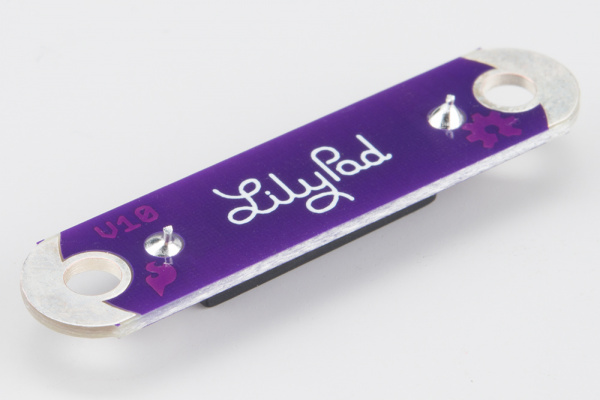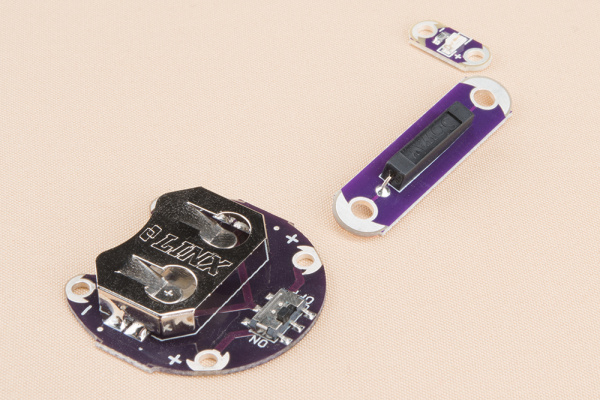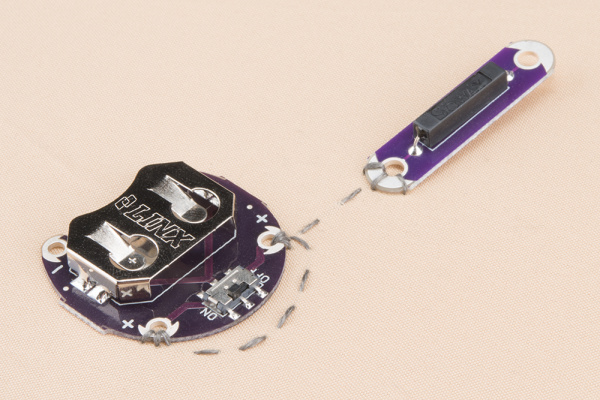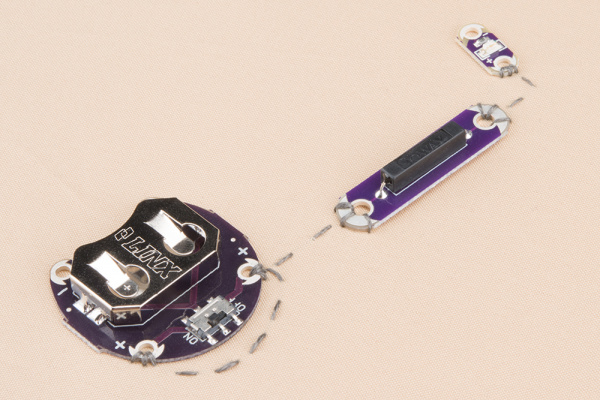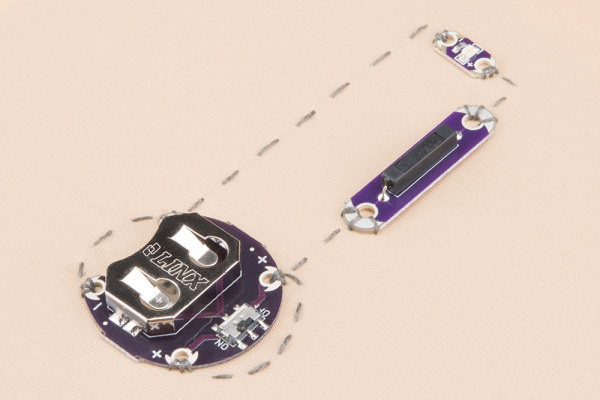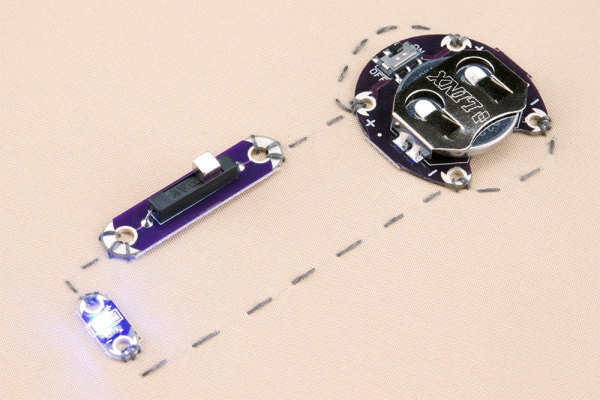LilyPad Reed Switch Hookup Guide
Designing a Reed Switch Circuit
If the board is going to sit directly on top of a delicate fabric, we recommend covering these pins with something that will blunt the pins and not damage the cloth. Hot glue, puff paint, and sugru are all potential solutions. Feel free to leave yours in the comments!
Once you've covered the pins, go ahead and line up your components, pointing the positive and negative pins of the battery pack towards the positive and negative pins of the LED, and placing the reed switch lengthwise between them, separating the positives.
Sew down both positive sewtaps on the battery holder, going around the outside with your stitches. Don't wrap your thread over the top of the board! From there, stitch up to the first side of the reed switch (either one is fine, this is a non-polarized component!), and sew that down as well. Knot and cut your thread.
With new thread, sew down the second half of the switch and connect it to the positive sew tap of the LED, then knot and cut again.
With new thread once again, sew down the negative pin of the LED, stitch down to the negative side of the battery pack, and sew down both negative sew taps, again stitching around the board to connect them rather than in a straight line across the board. This prevents the battery from sitting on top of the connecting thread, which could cause a short circuit.
Slide the battery into the battery holder, make sure that the slide switch it turned to "on", and approach the reed switch with a magnet. The light should turn on when it is near (it doesn't need to be touching if it's a strong magnet), and off when it's far.
